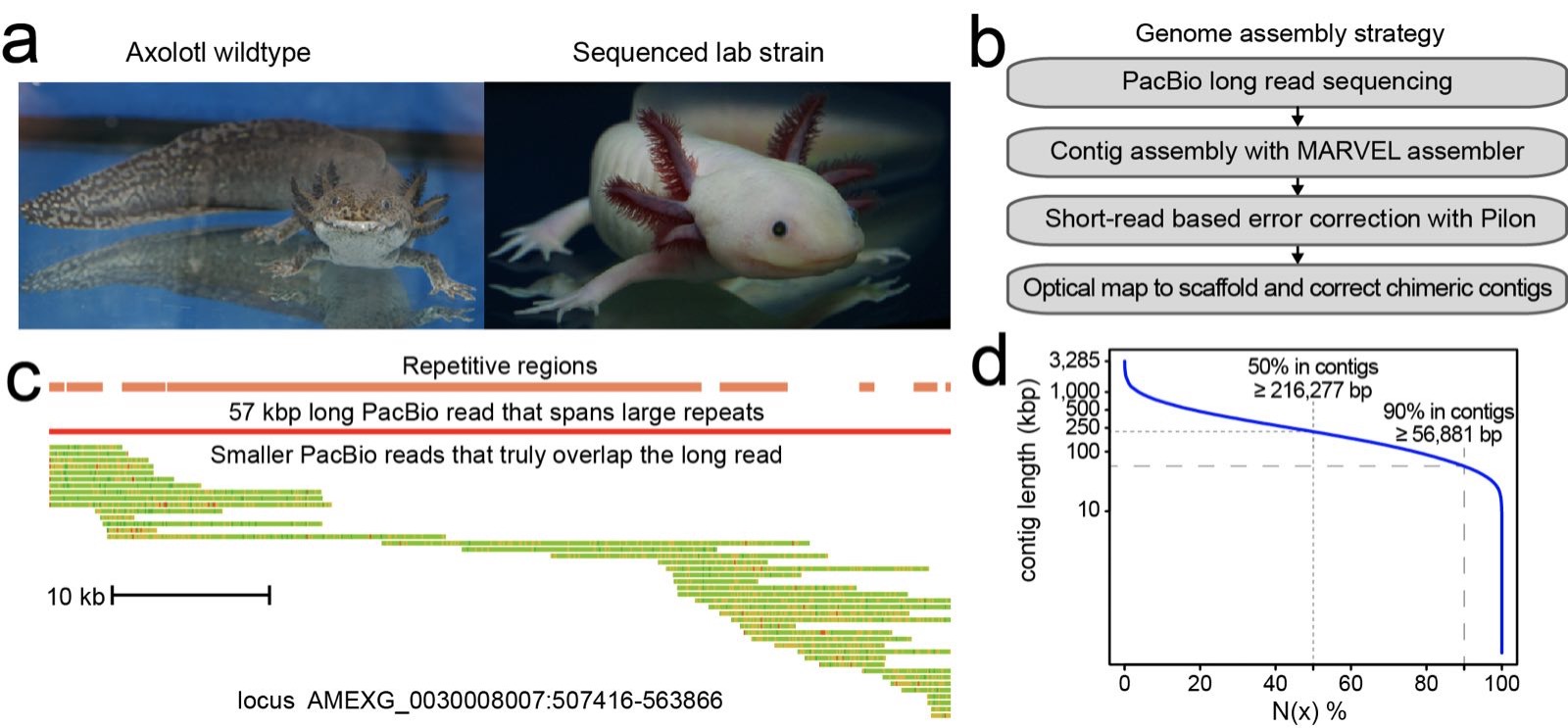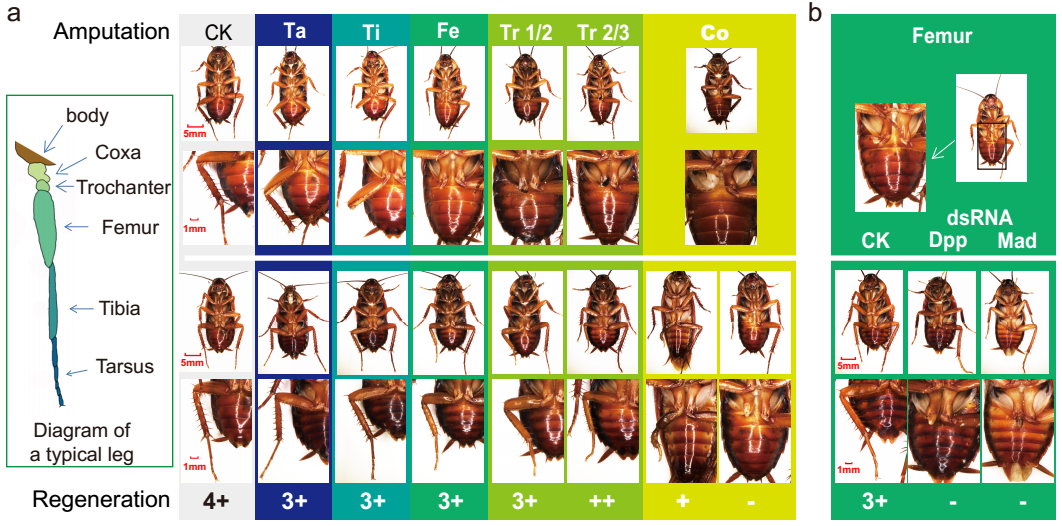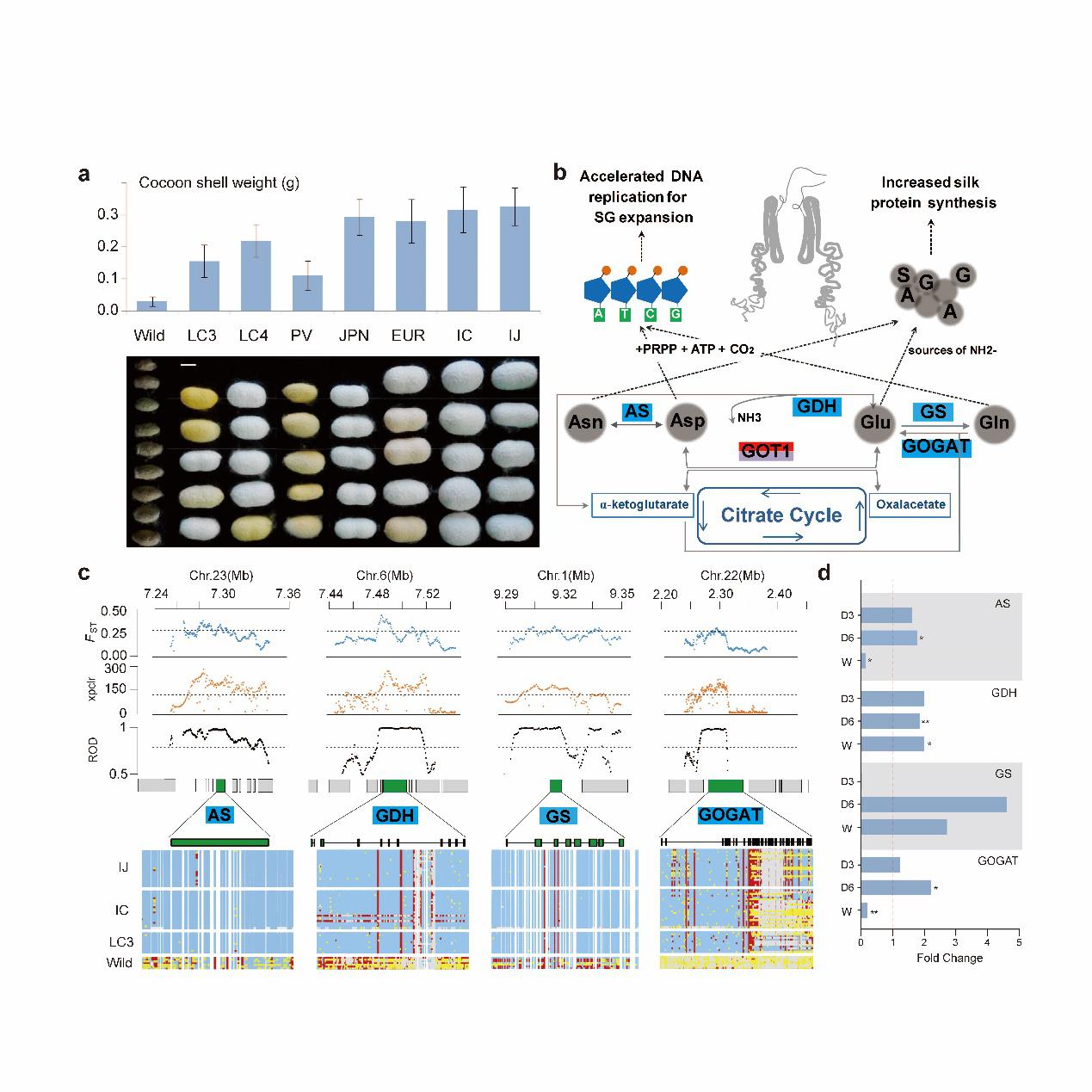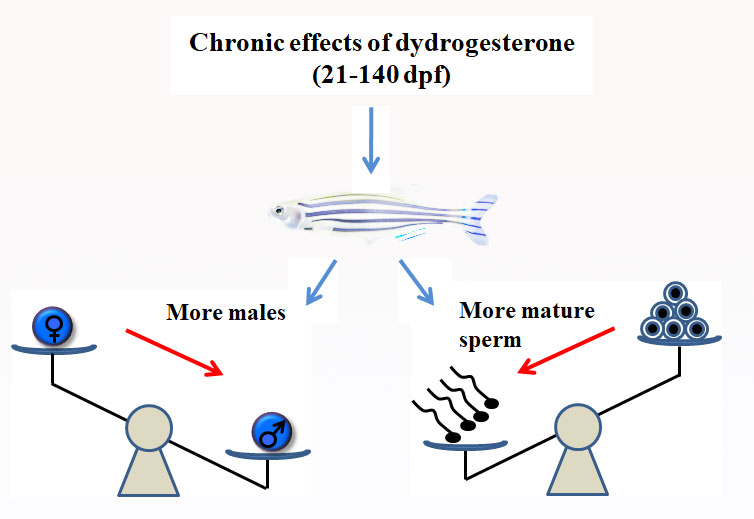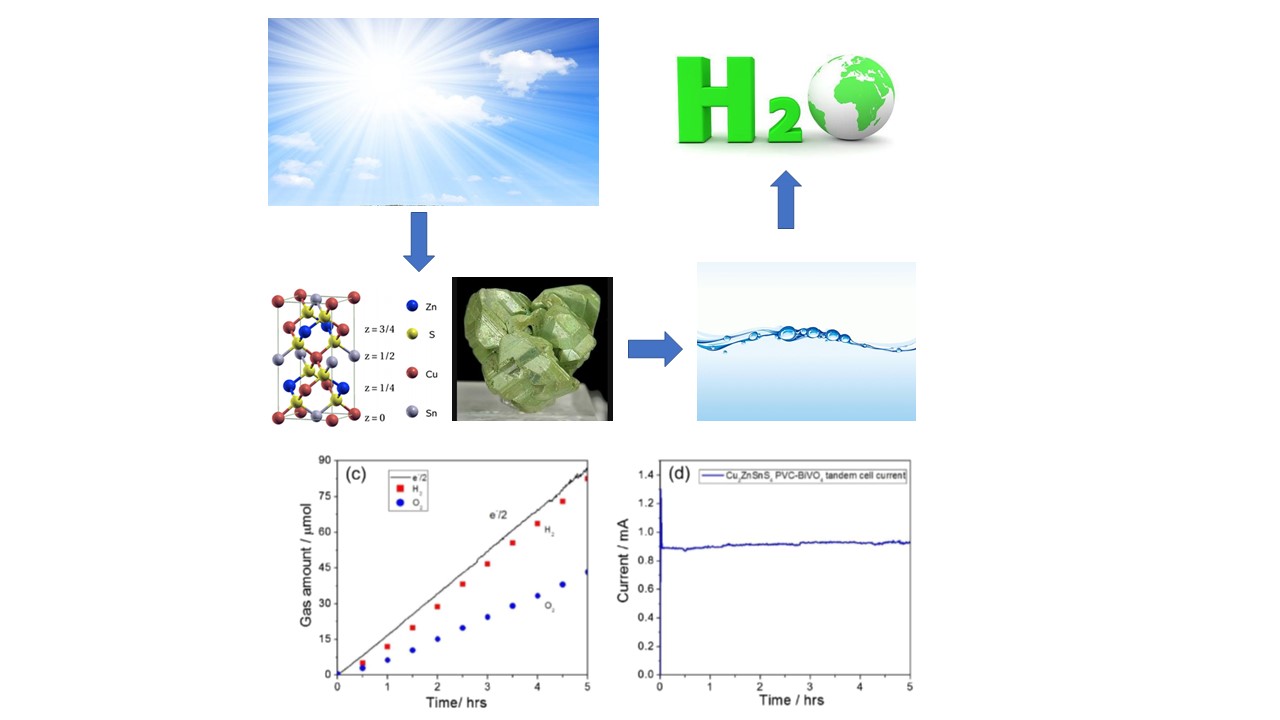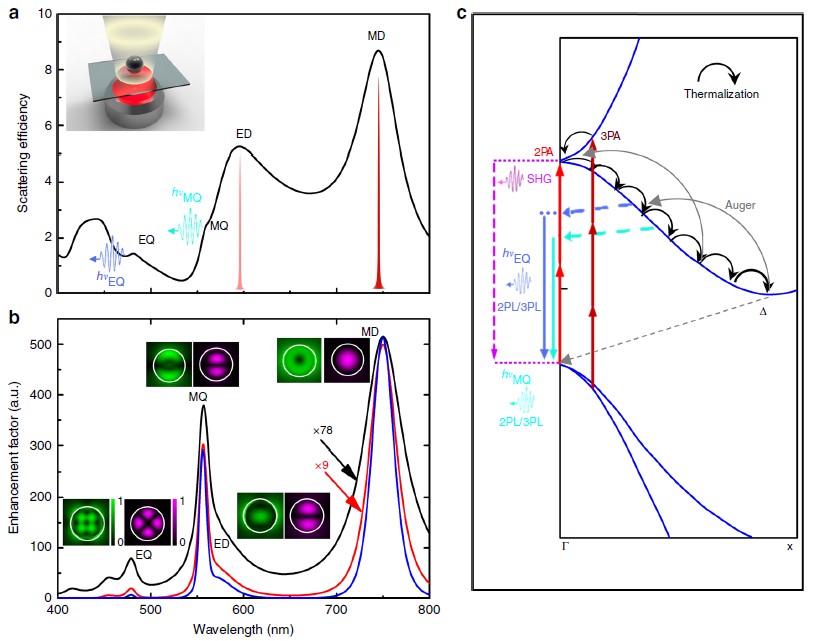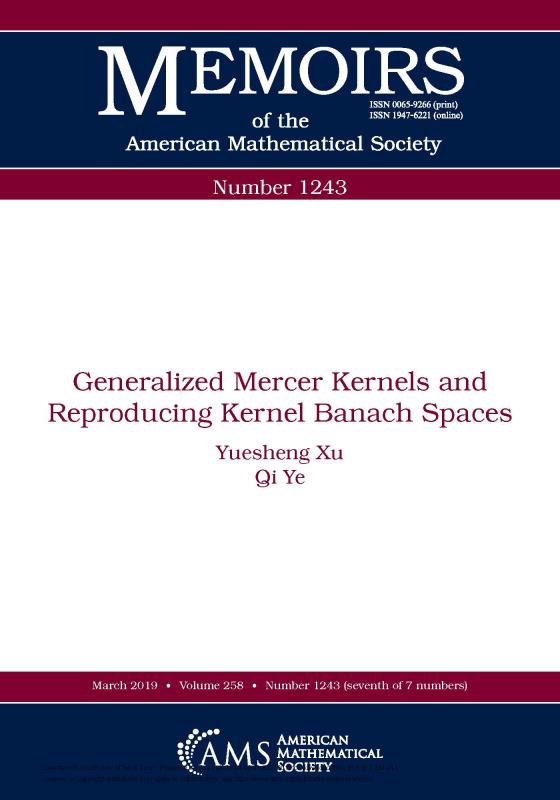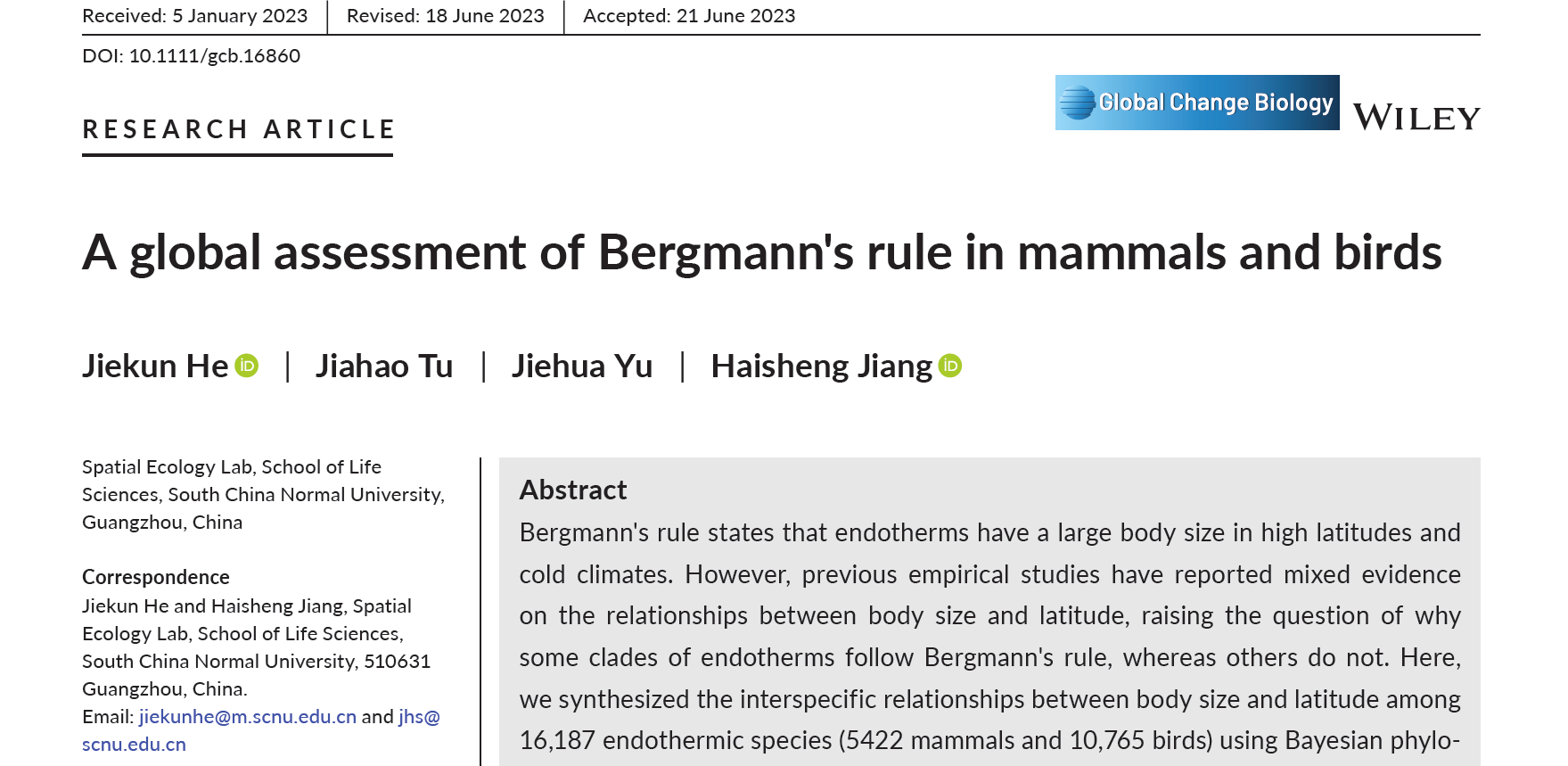
Likes
Ecogeographical rules describe the relationship between biological traits, life history and geographical distribution, and the climate. In 1847, German biologist Carl C. Bergmann discovered that the body size of endotherms of the same species tend to increase from the equator to the poles. For example, polar bears living in the Arctic region are larger in size than bears in other regions. This biogeographical phenomenon is called Bergmann's rule. He believed that species with a larger body size have a lower surface-area-to-volume ratio, thus having better heat conservation. The explanatory mechanism of Bergmann's rule has sparked controversy, attracting numerous scientists to conduct extensive research in different geographical regions and on different species. However, to date, no study has comprehensively evaluated the generality of Bergmann's rule for all endotherms worldwide. In particular, it is still unclear how biological and geographical factors among taxa affect their strength of following Bergmann's rule.
On July 10, a research team led by Prof. Jiang Haisheng, of the SCNU School of Life Sciences, published a research paper entitled A global assessment of Bergmann's rule in mammals and birds in the journal Global Change Biology. The paper confirms the generality of Bergmann's rule and suggests that it is influenced by biological and geographical factors such as body mass, dietary guild, migration, hibernation, habitat, and climate zone.
Based on data from 16,187 endothermic species worldwide (5,422 mammals and 10,765 birds), this study first used Bayesian phylogenetic generalized linear mixed models (pglmm) to find that the posterior mean slope for body mass-latitude correlations was significantly positive for all endothermic species, while the posterior mean slope of the body mass-temperature correlations was significantly negative, supporting the generality of Bergmann's rule in endotherms.
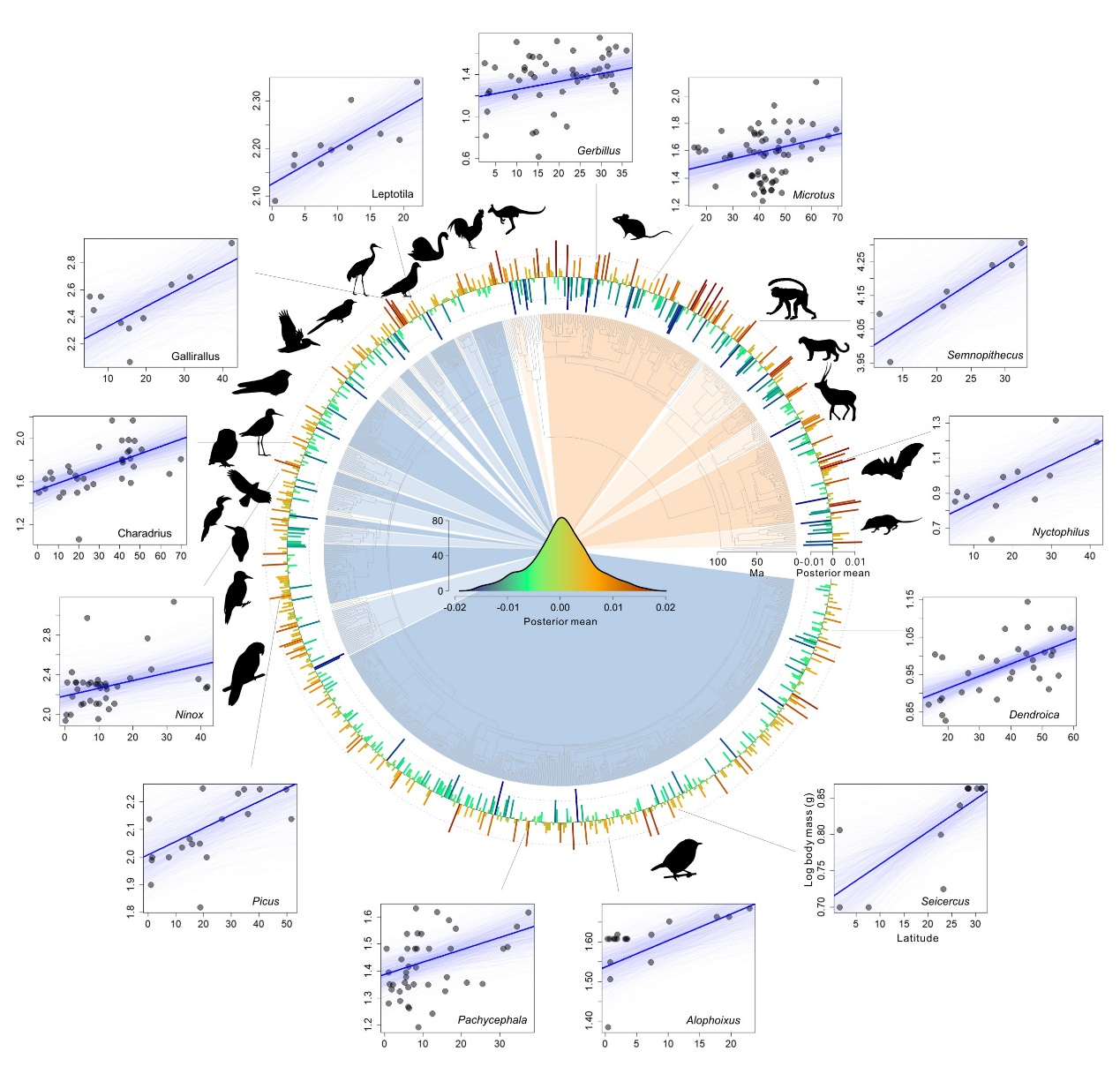
Phylogenetic distribution of body size−latitude relationships across mammals and birds.
Subsequently, comparing the body mass-latitude correlations slopes of different endotherms, the study indicated that the strength of Bergmann's rule varied substantially among animal orders. Finally, the study found that whether Bergmann's rule is applicable to particular taxonomic groups depends not only on their biological characteristics, but also on the climate zone they are in, through evaluating how a series of biological and geographical factors affect the body mass-latitude correlations.
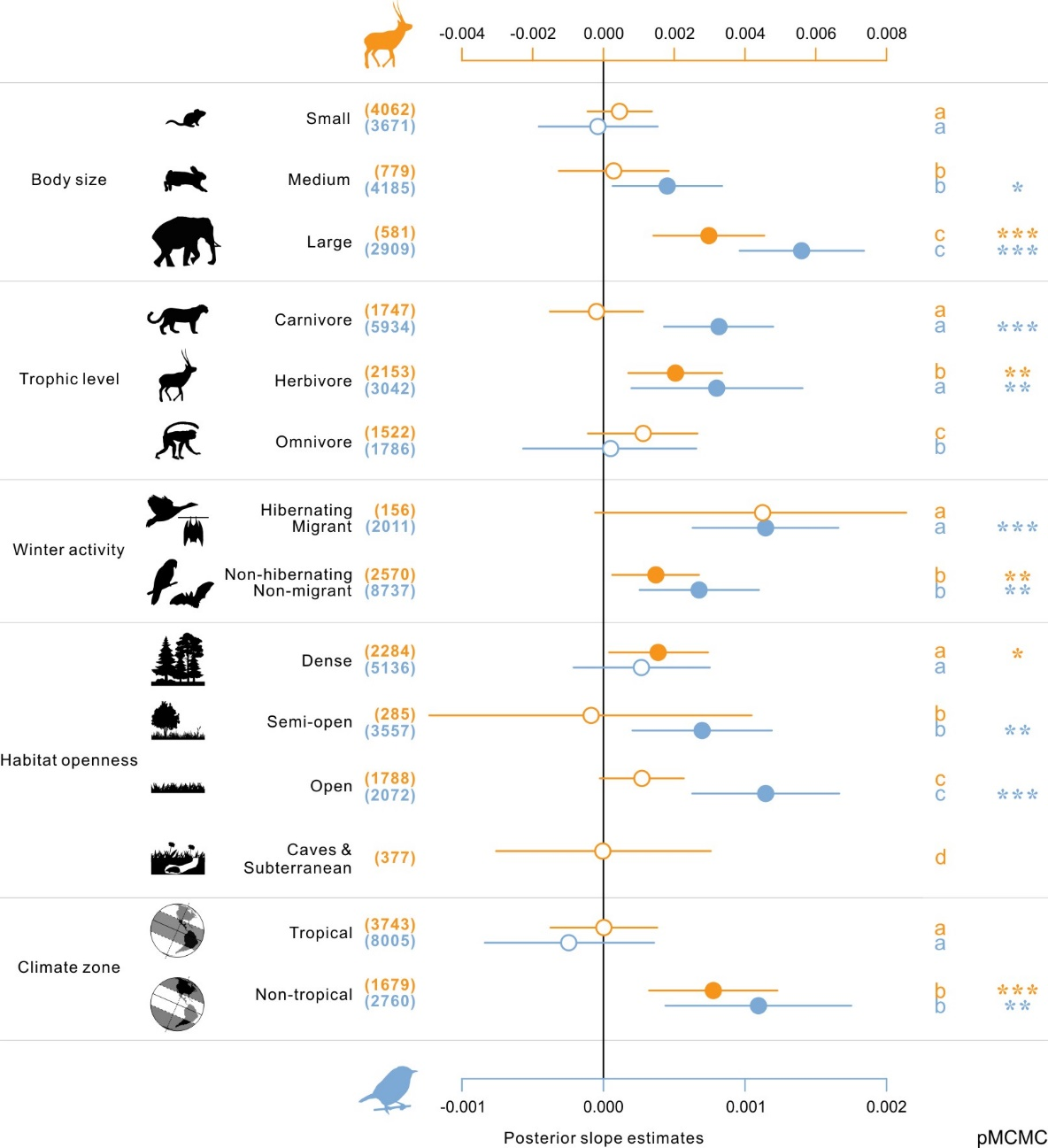
Posterior slope estimates of each predictor for the body mass−latitude relationships with 95% credible intervals.
Against the background of global warming, with faster warming rates in high latitude areas, whilst species (at high latitudes and of larger body sizes) follow Bergmann's rule more closely, it is expected that these species will face greater pressure for miniaturization. On the other hand, the latitude variation of body size is also regulated by behavioral strategies such as migratory behavior in birds and hibernation in mammals, indicating that the reduction in body size is not necessarily a universal phenomenon for endotherms to cope with global warming. They may also adapt to the changing climate environment by adopting specific behavioral strategies or changing their geographical distribution.
Therefore, this study, through the integration of species distribution, functional traits, and phylogenetic information, based on the framework of Bayesian phylogenetic comparison, verifies the generality of Bergmann's rule in endothermic species worldwide, and provides new ideas for the evaluation of classical ecogeographical rules on a global scale.
The School of Life Sciences of SCNU is the only affiliated institute of this paper, with associate researcher He Jiekun as the first author and professor Jiang Haisheng and associate researcher He Jiekun as the corresponding authors. This research was funded by the National Natural Science Foundation of China, the Guangdong Basic and Applied Basic Research Foundation, and the Science and Technology Program of Guangzhou, China.
See the paper:
https://url.scnu.edu.cn/record/view/index.html?key=45213de1880184270a9f52c9b9744559
Source: School of Life Sciences, SCNU News Center
Translated by Liang Dingyu, Zeng Wenting
Proofread by Edwin Baak
Edited by Wang Yingmin
What to read next:
